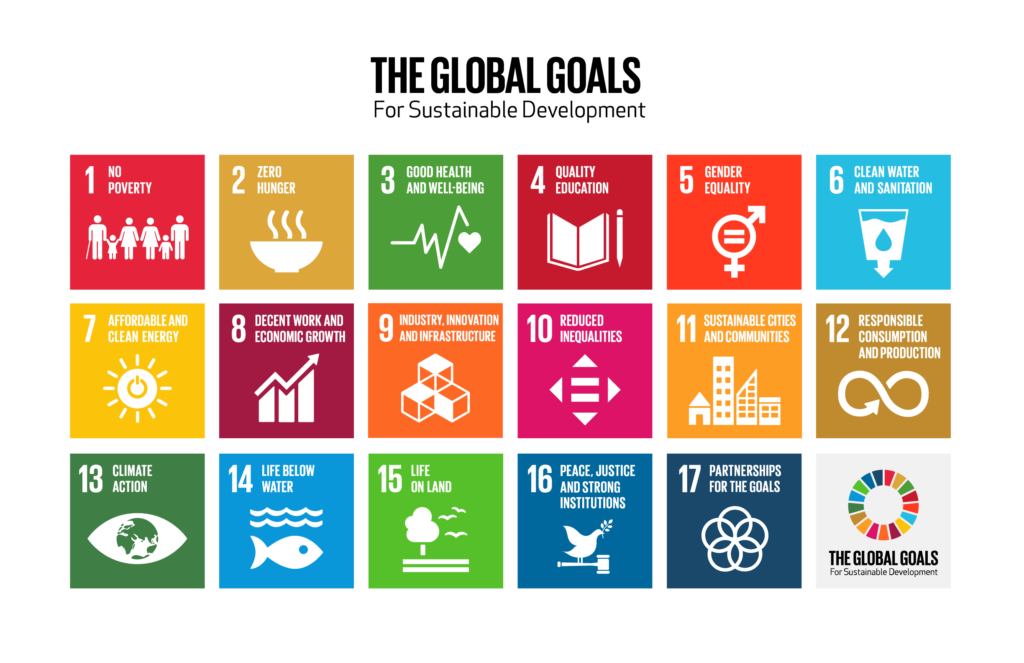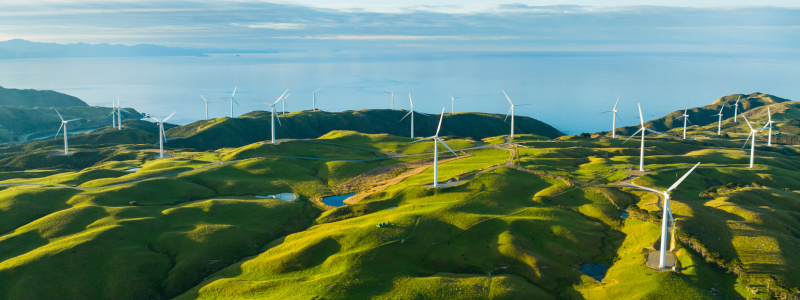Welcome to our blog series focused on sustainability
To begin our series, we will start by looking at the origins of sustainable development and explore basic knowledge on it.
Airbus Protect has a full business unit dedicated to Sustainability services, supporting customers in building sustainable development policies demonstrating a strong commitment to social and environmental responsibility.
What are we talking about exactly?
The origins of sustainability as we know it
The Concept:
The idea of ‘sustainable development’ dates back to reports written in 1972. However, it took decades for this concept to reach the mainstream, and has only recently begun to be taken seriously by governments and private enterprises.
Nowadays, the United Nations defines the concept into 17 Goals:

Source: https://www.globalgoals.org/
The official definition of sustainable development (according to the UN) was set out in the 1987 Brundtland Report, which defines it as “meeting the needs of the present without compromising the ability of future generations to meet their own needs”. The Report, named after UN President Gro Harlem Brundtland, found that the world’s most serious environmental problems were essentially due to widespread poverty in some parts of the world and unsustainable consumption and production patterns in others. It recommended a strategy to reconcile development and the environment.
Since then, many conventions and summits have been held to create agreements on sustainability laws, data, and treaties, and here are some key events in the timeline of sustainable development.






The Actors:
The actors of sustainable development play a pivotal role in promoting responsible economic, social, and environmental practices, aiming to ensure a balance between present needs and those of future generations.






Sustainability is a fairly broad concept, as demonstrated by the 17 goals set out by the United Nations. It is important to remember that this concept is often misleadingly reduced to climate change, due in particular to the urgency of this phenomenon.
Focus on climate change
Today, the issue of climate change has taken on a particular importance. Since the 1800s, human activities have been the main driver of climate change, primarily due to the increase of Greenhouse Gas (GHG) emissions.
On a macroscopic level, major phenomena have increased due to GHG emissions, such as: sea level rise, temperature increase, more storms, etc.
Recently, we have seen a growing awareness at international level, aided by the various reports of the Intergovernmental Panel on Climate Change.
The Intergovernmental Panel on Climate Change (IPCC) is a scientific organisation set up in 1988 by two United Nations bodies: the World Meteorological Organisation (WMO) and the United Nations Environment Programme (UNEP). Its main objective is to assess the scientific, technical and socio-economic knowledge needed to understand climate change, its potential impacts and the possibilities for adaptation and mitigation.
The IPCC operates as a forum where thousands of scientists from around the world collaborate to comprehensively review and evaluate available scientific data on the climate. It regularly produces assessment reports that are authoritative on climate change, providing a solid scientific basis for policymakers, governments, and other stakeholders to make informed decisions on climate-related policies and actions.
The reports of the IPCC, the Intergovernmental Panel on Climate Change (IPCC) are globally-recognised and highly-respected as references in the field of climate change, and its findings have helped raise public awareness about climate issues and spur global actions to reduce GHG emissions and mitigate the effects of climate change.
The sixth Assessment Report (AR6) began its release in 2021 with an update about the Physical Science Basis of climate change. The final synthesis report was finished in March 2023. To get more information about the ongoing AR6, there are a number of things worth looking at: the summary for policymakers; the Figures and the press conference slides.
The United Nations Paris Agreement, adopted in 2015 by 196 signatories, reflects the key findings and recommendations from IPCC successive reports: setting the goal of limiting global temperature rise to well below 2°C above pre-industrial level (with efforts to limit it into 1.5°C) and emphasising on the importance of enhancing adaptive capacity and fostering resilience to climate change.
It is also important to note that while we talk mainly about climate change, other organisations are working on sustainability goals, such as the Intergovernmental Science-Policy Platform on Biodiversity and Ecosystem Services (IPBES). It is another intergovernmental panel that operates in a similar way to the IPCC. The IPBES aims to enhance the interface between science and policy on biodiversity and ecosystem services issues.
 Sustainability
Sustainability 





